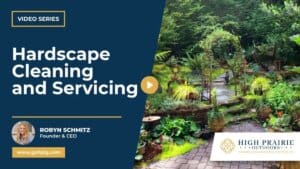Trees make a worthy addition to any landscape. Not only are they lovely to observe, but they offer a notable advantage to plants and living things around it. As a whole, trees contribute significantly to the air that we breathe. They filter air pollution, helping to improve the quality of air around us. Elements such as carbon dioxide and other greenhouse gases are extracted from the air, courtesy of trees.
In the garden, these trees are beneficial to plants and other existing organisms. The organic matter released from trees offers a natural feed, which supports the subsistence of insects, worms, frogs, and other small creatures that add to the life of your garden. Hence, it is no wonder why many individuals choose to plant trees at all.
For those choosing to plant new trees, the assumption held is that they need staking once planted. This is not entirely factual, as not all trees require this support. Choosing to stake a tree that does not require it can yield adverse results.
What Is Staking?
Staking a tree involves the use of metal posts, wooden frames, and wires to keep trees upright and sturdy. Essentially, the purpose of this practice is to provide extra support as newly planted trees often lack the strength they need to withstand particular winds and conditions that upset their sturdiness.
Reckless movement can cause the tree to be uprooted, which can impede its development. However, if a tree is staked, it should not be done too tightly. Although the intention is to offer additional backing, the tree still requires a few inches to enable adequate root and trunk development.
Despite the apparent advantage offered by staking, if this practice is implemented, there is a stipulation. Trees are not be staked for an extended time. This is a short-term action that must be done correctly to avoid accidental damage. The stake must not be placed through the root but to the side of the tree. Also, its progression must be observed frequently. The stake should be removed before the second growing season.
The Disadvantages of Staking Trees
The drawbacks of staking typically stem from trees that are not appropriately staked and left in longer than required. When implemented incorrectly, the tree is susceptible to damages that affect its development. A tree’s growth can be restricted, causing it to die or grow taller rather than wider with depth. In many instances, the material used to wrap around the tree is left unattended, causing it to slice through the bark and choke the tree.
The issues seen with poor staking involves instances where the tree suddenly breaks where it is tied to the stake. Robust winds generally play a role in this outcome. Other situations include roots that grow weakly, which increases the time it takes for the tree to establish and mature.
Additional impacts involve the trunk of the tree, failing to develop appropriately. When this occurs, the base of the tree grows thickly and becomes thinner up the shaft of the trunk. This malformity results in a tree that is too small and feeble.
When Do Trees Need Staking?
Further to the myth that all trees need to be staked, this is not truthful. Staking is only required when extreme exposure to elements is expected. For instance, windy areas, and locations where trees are likely to come in constant contact with people are reasons to consider staking. Another purpose involves small root balls and heavy bare-root trees, which may make them likely to collapse.
Overall, trees with weak trunks or trees that are planted in wet or loose soil should be considered for staking. However, a tree that is planted correctly will not need staking, and thus only certain exceptions make staking suitable. Its success is contingent on the planter and their willingness to adhere to the rules of staking. Failure to comply can cause long-term tree weaknesses.
High Prairie Outdoors
With the expertise of a professional landscaper, you will not have to worry about the complications of staking. The correct techniques will be implemented to ensure that your tree is planted successfully. Hence, should staking be considered based on the conditions presented, proper maintenance will be applied to limit the destructive impacts of staking.
If you are looking for a landscaper in your area to help you elevate your outdoor living, High Prairie Outdoors can assist. Need landscape help from a local expert? Click “Get Started” today. Our team of professionals would be more than happy to assist.




